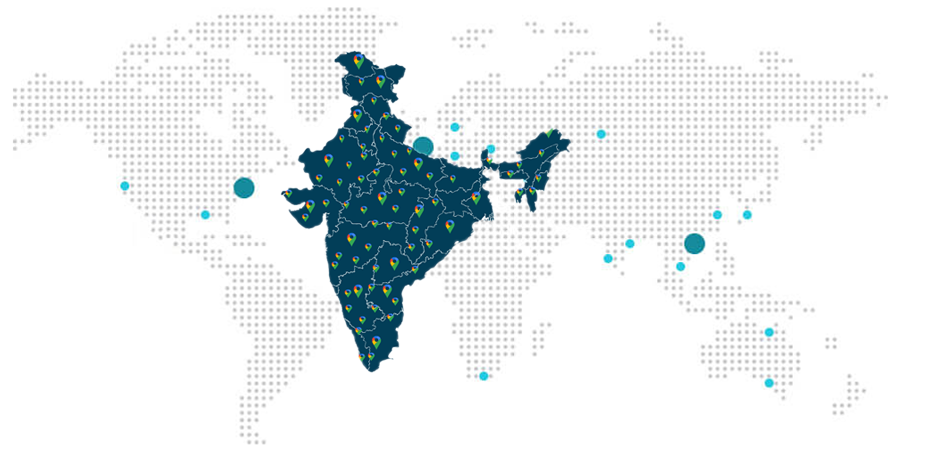ITC Rules for Capital Goods Under GST
Categories
GST Services
What is ITC?
ITC, also known as Input Tax Credit, is the credit which a manufacturer receives for the payment of input taxes towards inputs used in the manufacture of products and a dealer receives the same in case of resale of purchased goods. Although input tax credit is not applicable on all types of inputs and each state has its own rule and regulation. Input tax credit is applicable on VAT, service tax, capital goods.
In simpler words, in case you are a manufacturer and total tax payable on final product is RS 450 and you have paid tax on your input is Rs 300. So in this case, you can claim input credit of Rs 300 and you only need to pay Rs 150 tax on it.

ITC is applicable on purchases such as:
- Sale or resale within the state;
- Used for making 0-rates sales;
- Used as capital goods while manufacturing or reselling the taxable goods;
- Goods used in the execution of work contracts;
- Goods which are used as capital goods, while manufacturing or reselling the taxable good;
- Goods which are used as raw materials, consumable stores or containers, or packing materials to be sold anywhere in India or abroad.
However, one cannot claim input tax credit on below mentioned purchases:
- Goods bought from unregistered dealers;
- Goods without an invoice;
- Goods purchased from abroad;
- Interstate good purchases;
- Goods purchased with an invoice, however it has no mention of tax amount on it;
- Goods purchased for free or has been received as a gift or for personal consumption;
- Goods purchased for manufacturing exempted goods other than exports;
- Goods listed under negative list by the respective state governments.
What Are Capital Goods?
Those goods which are used by a company to produce consumer goods are classified as capital goods. Also, capital assets are tangible assets which a company owns such as buildings, machinery equipments, vehicles and tools and uses as an input to produce the consumer goods. Also, the manufacturers of sectors such as automobiles, aircraft and machinery fall under capital goods because they are used by manufacturing and shipping sectors to produce other goods and services. Capital goods are not always the fixed assets like mentioned above. A simple example of movable capital goods is hair clipper used by the hair stylists, paint used by the painters etc.
Capital goods are not consumed when their job is done i.e. when the product you intended to produce through it is ready. For example, if you intend to make a cake, you would use ingredients such as eggs, water, flour and butter and a microwave/oven. Here, the microwave/oven you have used to make the cake is your capital good. So, going by its definition and usage, capital goods are not used and consumed in a single year of production and thus they cannot be deducted as business expense in a single year itself and thus the business uses various accounting techniques such as depreciation, amortization and depletion to evaluate the wear and tear of capital goods.
What is GST?
Goods and Services Tax, infamously known and used as GST, was introduced in India on 29th March 2017 and was implemented pan India on 1st July 2017. The main aim behind implementation of GST was to replace entire indirect taxes on supply of goods and services and have rather just one indirect tax i.e. GST. Under GST structure, GST tax is applicable at every point of sale which makes it a comprehensive, multi-stage, destination-based tax which is levied on every value addition. Introduced to remove various indirect taxes levied on goods and services, GST synchronizes with Digital India anthem of the government because it is a technologically driven tax wherein activities such as registration, return filing, refund application form and various other actions can be done online on the GST portal. GST aims to curb the inflation in the longer run and has various advantages over previous tax regime such as removing the cascading tax effect, online procedure, increased logistics efficiency, regulating the unorganized sector, lesser compliances, simpler tax structure and system, higher threshold for registration.
Input Tax Credit in GST
After the implementation of GST, input tax credit mechanism is applicable when you are covered under the GST Act i.e. when you are paying anything, you have to pay applicable GST on it, however, later on you can claim input tax credit on the GST you have paid on your purchase. For example, if you have bought laptop for your work as a nutritionist and wedding photographer, you have to pay the applicable GST on the laptop. However, you can claim the input tax credit of GST paid on the purchase of laptop only to the extent it pertains to her freelance business.
In case you have bought any specific software for your business, you are entitled to claim full input tax credit on it.
Documents required for claiming Input Tax Credit
In order to claim input tax credit, you need to have following documents in order:
In order to claim input tax credit on Capital goods:
Input Tax Credit on Capital Goods Under GST
Input tax credit on the capital goods is dealt by Rule 8 of the ITC. While you claim input tax credit under GST, you need to cover the following points:
GST comprises of four segments namely: Central Goods and Services Tax (CGST) which is also known as central tax; State Goods and Services Tax (SGST) which is also known as state tax; Union Territory Goods and Services Tax (UTGST) which is also known as Union Territory Tax and Integrated Goods and Services Tax (IGST) also known as Integrated tax. Input Credit tax on the above mentioned segments is calculated in the following manner: Input Credit tax on the above mentioned segments is calculated in the following manner:
- Input credit of Central Goods and Services Tax: In this case, payment is allowed first for CGST and in case of any balance, payment of IGST is allowed. Input credit of CGST cannot be used for the payment of SGST.
- Input credit of State Goods and Services Tax / Union Territory Goods and Services Tax: In this case, payment is first allowed for the payment of SGST/UTGST and in case of any balance, it is utilized for the payment of IGST. Input credit of SGST/UTGST cannot be used for the payment of CGST.
- Input credit of IGST: In this case, payment is first allowed for the payment of IGST and in case of any balance, it is first used for the payment of CGST and then for the payment of SGST/UTGST.
What Clients Say

Prakash Verma


Praveen Chauhan


Pradeep Kochhar

Blogs
In today's dynamic business landscape, navigating through various regulatory requirements and financial obligations can be... Read More
FinacBooks is a reliable platform that helps business owners in getting verified leads. It offers various services and solutions that can... Read More
Starting a new business in India requires several legal procedures, paperwork, and timely compliance with regulatory authorities. Company... Read More








